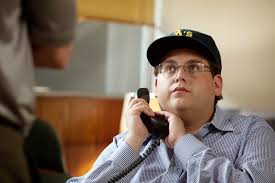
By David Saltzer, AngelsWin.com Senior Writer
In Part 1 of this 2-part series, I’ll discuss some of the complicating factors involved in making a trade. I’ll share some insights into all those involved in the process and how they all work together to make a trade happen or how they can each individually prevent a trade from occurring.
It’s the July trade deadline, and baseball fans are in fever pitch about making trades. On any given day right now, fans are logging millions of visits on sites like MLBTraderumors.com, and posting thousands of trade ideas on sites like AngelsWin.com.
Personally, I like reading Robert Cunningham’s articles for Angels trade ideas, as he does a thorough job analyzing the needs and values of trades from multiple perspectives. His ideas are sound and well-reasoned, and about as logical as any on the internet. They are definitely more thought-provoking than most.
But, for all the other keyboard GMs out there, I thought I’d share some of the insights I’ve gained over the years to show just how complicated it is to make a trade.
So, you want to make a trade? Great! Quick question: how do you do so? If you really think that GM “A” from Team “A” calls up GM “B” from Team “B” and proposes a deal, and gets it done in a single phone call, like in “Moneyball”, then you’ve been duped by Hollywood. Just like no one who lives in Southern California believes that Jack Bauer could drive from West LA to Simi Valley in less than 20 minutes of “real time”, no one I’ve ever talked to within the industry has ever said an MLB team would make a trade of any significance in just 1 phone call and no advance work.
If that’s not how it’s done, then how is it done? To answer that question, you have to really answer two different questions: First, how many individuals/groups within an MLB club need to approve a trade before it gets done? Second, how do you get them all to agree to the trade?
By my count, in talking with many within the industry, before any substantial to quasi-substantial trade happens, there are at least 8 different groups/individuals within every MLB organization who need to approve it. And for many cases, that list can grow to 10 or more groups and individuals. These groups/individuals are: the external scouts (those who watch other organizations), the internal scouts (those who scout their own organization), the analytics team, the director of player development, the MLB team management (field manager and coaches), the medical staff, the financial/contract managers, and the GM. In many cases ownership, and some special advisors to the GM are often very much involved in the decisions.
That’s just for both of the teams involved in the trade! If the player has any limited trade clauses in his contract, add the player and the agent into the mix. The player may have strong preferences as to where he ends up playing, and through his agent, may try to exert some leverage for a contract (such as having an option picked up or not exercised by the team).
So, before any trade actually happens, all of these independent and moving parts have to come together in consensus to make a trade.
Knowing all of this, it’s actually somewhat surprising to see how often trades actually occur throughout the year. Each individual/group plays a substantial and different role in the process, and many trade ideas fall apart because all the groups can’t come to agreement.
I will give you some examples in generality. I will not mention names, teams, etc. You can choose to believe these examples or not, but they are entirely true based on actual discussions that I’ve had with people within the industry.
Many times I’ve talked with people within the industry about certain players that are listed as “available” by fairly reliable sites or reporters. Sometimes, I’ve had scouts tell me “I really like him, but I can’t get the analytics guys to sign off on him.” In that situation, the scouts–the eyes of the game—can’t convince the sabermetrics team (every club has a group dedicated to statistical analysis) to believe that what they are seeing on the field is better than what the numbers are telling them. I’ve heard of many trades killed for players that scouts want because the sabermetrics might say that the player “won’t play as well in our ballpark” or might have some flaw that their analysis found, such as “too much swing and miss in their swing”.
In other cases, I’ve talked with management types who would love to acquire a player but can’t get it done because there is a clause in that player’s contract that the financial people don’t want. The GM may even send one or more scouts to watch that player in every game and will call the scout asking if the player did anything to impress enough to justify the trade. The scout may nix the deal because he’s determined that the proposed player is playing with an “unreported injury,” or “not doing enough to impress him [the scout],” even though the numbers might imply otherwise. And of course, there’s always the possibility that the player’s personality “won’t work in the [new team’s] clubhouse”.
There are times when the team’s manager may be desperate to acquire a player to fill a role on the team, but the internal scouts or player development won’t approve of giving up the talent that it would take to acquire him. This might push a team to making a lesser deal, or even no deal, if the asking prices skyrocket.
Lastly, teams with very involved owners, or owners who have placed firm financial caps on a club has to always get ownership to approve of any deals. That’s not always easy. Trying to convince an owner to go over those limits, or take on a player that ownership doesn’t want, is always tricky. The bigger the move, the more the ownership will be involved in the decision. Even clubs going through a complete rebuild might be reluctant to trade off a key piece if they perceive the player to be an integral part of the team’s marketing.
As for getting all of these individuals and groups to agree, that’s an unbelievable complication that can’t be summarized in any single article. Every trade and non-trade has its own story and nuance. There are so many factors that come into play. Each individual/group involved in the decision has its own interests and goals that may be separate from actual baseball decision. For example, larger market teams are under greater pressure to never do a full rebuild, so even if a team can benefit long-term from a trade, the short-term marketing/financial consequences may prevent the ownership and management from agreeing to it.
Far more trades get into the exploratory phase than ever get reported. Every team is constantly looking for ways to improve on this season and into the future. The amount of information available to organizations is rather staggering, and by the time a trade is completed, has been thoroughly vetted by numerous individuals and groups within an organization. If you, as a fan, are wondering why deals that appear to make obvious sense aren’t getting done, it’s probably because somewhere in the process, one or more parts failed to come together.
So, now that we’ve seen just how many different individuals and groups are involved in making a trade, and how complicated it is to get them all to agree to a trade, in Part 2, I’ll share some insights as to how trades are actually done according to those who have made them.
Add The Sports Daily to your Google News Feed!
